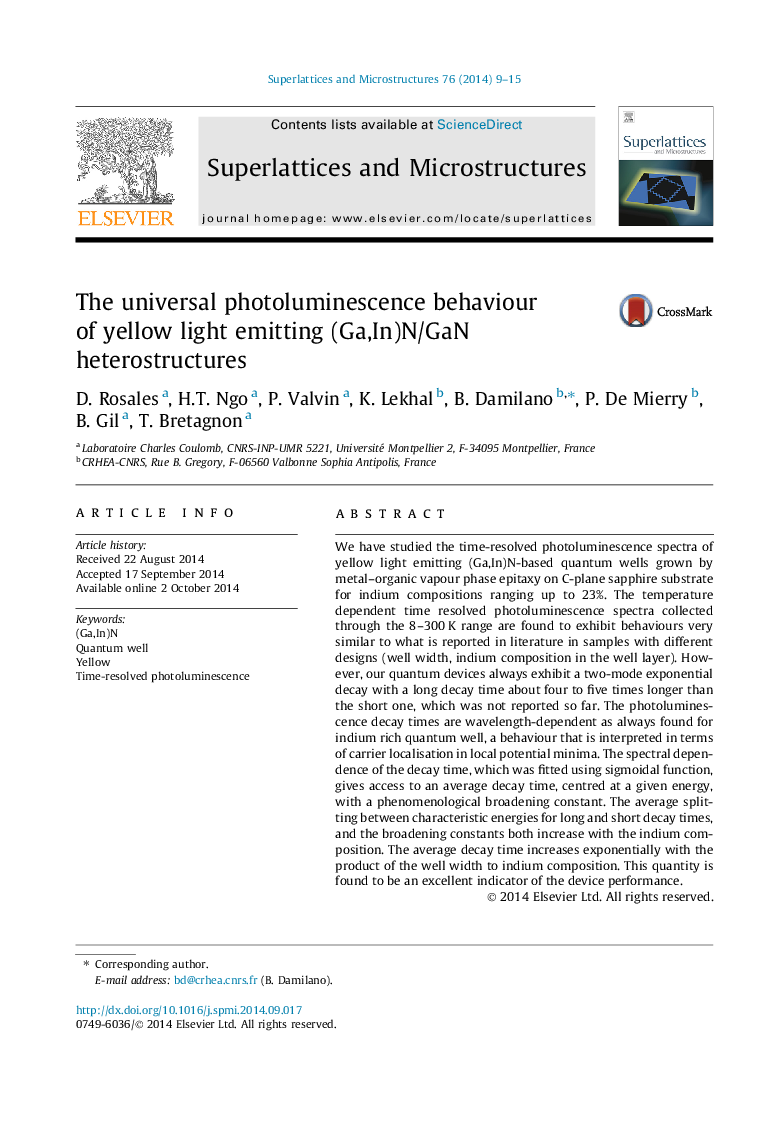| Article ID | Journal | Published Year | Pages | File Type |
|---|---|---|---|---|
| 7942532 | Superlattices and Microstructures | 2014 | 7 Pages |
Abstract
We have studied the time-resolved photoluminescence spectra of yellow light emitting (Ga,In)N-based quantum wells grown by metal-organic vapour phase epitaxy on C-plane sapphire substrate for indium compositions ranging up to 23%. The temperature dependent time resolved photoluminescence spectra collected through the 8-300Â K range are found to exhibit behaviours very similar to what is reported in literature in samples with different designs (well width, indium composition in the well layer). However, our quantum devices always exhibit a two-mode exponential decay with a long decay time about four to five times longer than the short one, which was not reported so far. The photoluminescence decay times are wavelength-dependent as always found for indium rich quantum well, a behaviour that is interpreted in terms of carrier localisation in local potential minima. The spectral dependence of the decay time, which was fitted using sigmoidal function, gives access to an average decay time, centred at a given energy, with a phenomenological broadening constant. The average splitting between characteristic energies for long and short decay times, and the broadening constants both increase with the indium composition. The average decay time increases exponentially with the product of the well width to indium composition. This quantity is found to be an excellent indicator of the device performance.
Related Topics
Physical Sciences and Engineering
Materials Science
Electronic, Optical and Magnetic Materials
Authors
D. Rosales, H.T. Ngo, P. Valvin, K. Lekhal, B. Damilano, P. De Mierry, B. Gil, T. Bretagnon,
